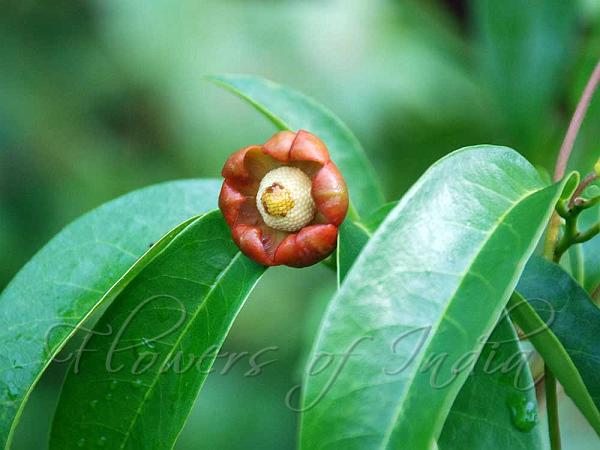|
| South-Indian Uvaria |
|

|

|
|
|
|
Photo: |
Botanical name: Uvaria narum Family: Annonaceae (Sugar-apple family)
South-Indian Uvaria is a large woody stellately
pubescent straggling shrub with dark bluish green leaves. Leaves are
oblong - lanceolate , pointed or long-pointed, hairless on both sides,
stalks short, less than 6 mm. Crushed leaves smell like cinnamon.
Flowers are reddish, solitary, at branch ends or leaf-opposed, 2.5 cm
in diameter. Stamens have anthers concealed by the overlapping
connectives. Carpels are numerous , scarlet-red; seeds chestnut brown.
South-Indian Uvaria is found in Western ghats from Maharashtra
southwards up to an altitude of 1,200 m.
Medicinal uses:  Root and leaves-used in intermittent fevers, biliousness, jaundice;
also in rheumatic affections; bruised in salt water, used in skin
diseases. A decoction of the root bark is given to women to control
fits at the time of delivery.
Root and leaves-used in intermittent fevers, biliousness, jaundice;
also in rheumatic affections; bruised in salt water, used in skin
diseases. A decoction of the root bark is given to women to control
fits at the time of delivery.
 Root and leaves-used in intermittent fevers, biliousness, jaundice;
also in rheumatic affections; bruised in salt water, used in skin
diseases. A decoction of the root bark is given to women to control
fits at the time of delivery.
Root and leaves-used in intermittent fevers, biliousness, jaundice;
also in rheumatic affections; bruised in salt water, used in skin
diseases. A decoction of the root bark is given to women to control
fits at the time of delivery. | Identification credit: Asokan Mash | Photographed in Kerala. |
• Is this flower misidentified? If yes,